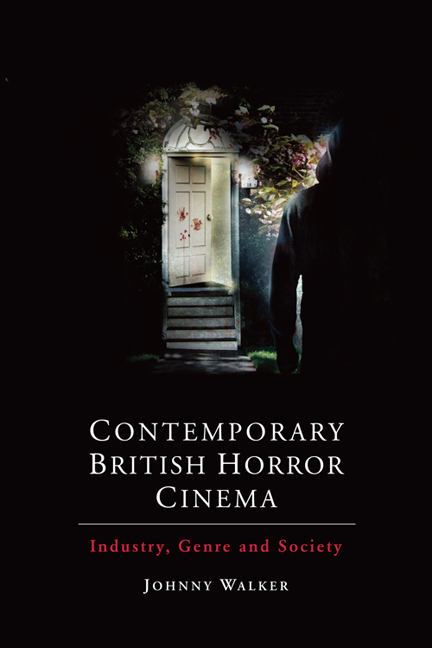Summary
Andrew Spicer begins the final chapter of his important study Typical Men: The Representation of Masculinity in Popular British Cinema, with the following statement:
One of the most striking features of masculinity in contemporary British cinema is its heterogeneity and hybridity: the range of male types is much wider than before, and the types themselves more complex. (Spicer 2001: 184)
He continues, partly explaining this shift as being due to the ‘the present state of British filmmaking which has become decentred and eclectic, lacking the studio infrastructure or dominant producers of the earlier period’ (ibid.). Recent British horror film production has testified to this industrial decentralisation, due, among other things, to the independent work carried out by specific filmmakers, independent production companies and the dedicated cult audience for horror films on DVD. Furthermore, Spicer's recognition of onscreen ‘hybrid’ male types in British cinema at the dawning of the new millennium extends across many of the films that fall within the remit of this book. This has already been noted to some extent in the recent scholarship of Linnie Blake, who explains the hybridity of male identities in British horror as being reflective of ‘the erosion of the British man's traditional role as head of the family’ in the face of Tony Blair's New Labour government and, specifically, his hybrid ‘third way … that had been engendered by the destruction of the nation's industrial base and the ongoing realisation of women's longstanding calls for economic, political and cultural equality’ (2008: 162). As such, in what Blake rightly identifies as ‘self-reflexive films’ such as Shaun of the Dead, Dog Soldiers and Reign of Fire (Rob Bowman, 2002), there was ‘an extraordinary proliferation of what Noël Carroll would term “fusion monsters” [that is, humans who mutate into monsters such as werewolves or zombies]: which our questing heroes must invariably overcome in order to forge themselves a mode of masculinity fitted to their time and place’ (Blake 2008: 158). As a result, Blake identifies ‘a new kind of “fusion hero”’ in British horror, ‘one who undertakes a hybridisation of earlier models of British masculinity in his mission to conquer the monster and become a man’ (ibid.).
- Type
- Chapter
- Information
- Contemporary British Horror CinemaIndustry, Genre and Society, pp. 59 - 84Publisher: Edinburgh University PressPrint publication year: 2015



